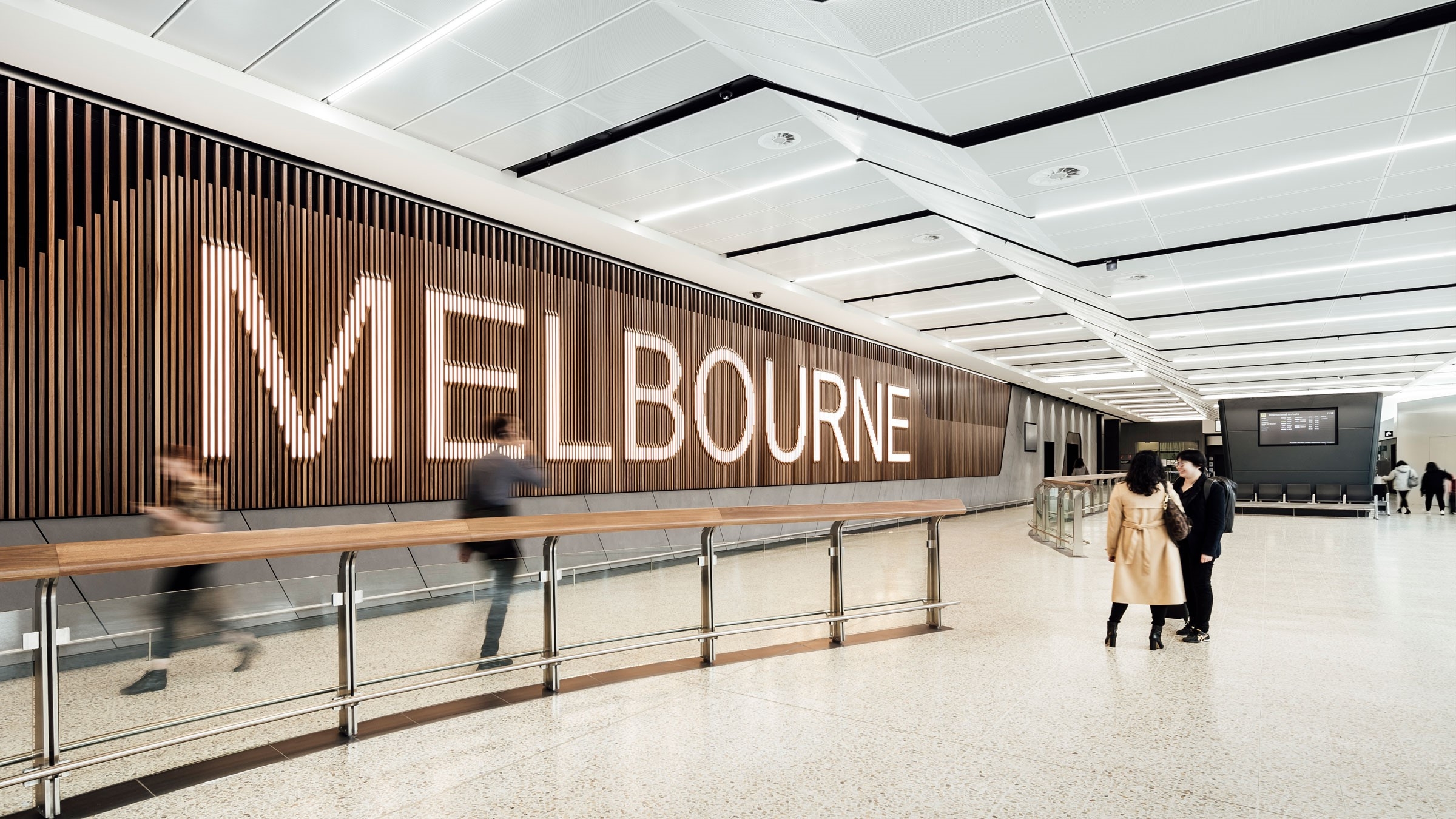Transforming portfolio and project management at Melbourne Airport
Melbourne Airport—colloquially known as Tullamarine Airport— has been servicing access to the city of Melbourne since 1970. As the second busiest airport in Australia, it is the primary international airport of the four airfields serving the Melbourne metropolitan area. As one of Australia’s premier transport hubs positioned on a large estate on the outskirts of the Melbourne CBD, the airport services significant aeronautical infrastructure and operates Victoria’s second largest business park, providing a hub for freight and logistics and employment for thousands of people. It also manages an extensive infrastructure network of connecting roads and facilities required to service the various businesses operating within its boundaries.
Melbourne Airport is one of two airports run in the region by Australian Pacific Airports Corporation (APAC), the other being Launceston airport in Tasmania. Melbourne Airport has a significant Capital Works spend, with current and proposed projects budgeted at up to $1.5bn and budgets of at least $1bn per year planned over the next decade. Major projects under management include the development of a commuter rail link, completion of an additional airport runway and a new airport terminal (Terminal 5).
In 2018/2019 Melbourne Airport reached its highest passenger milestone in its history by welcoming 37.4 million travellers to the Australian shores. But in early 2020 that all changed with the onset of COVID-19, causing unprecedented disruptions and economic impacts to the travel industry.
Key Statistics:
- Melbourne Airport has used Altus to rapidly accelerate project management consistency and maturity across their substantial Enterprise and Capital Works project budgets, increasing visibility, accountability and transparency for project managers and key stakeholders.
- All projects and portfolios are now managed via one integrated platform creating consistent project management and delivery and shifting the focus to better forward planning and measurement of benefits realisation.
- The PMO now has a single source of truth and a single location to manage the oversight of enterprise and capital projects resulting in greater visibility and portfolio control.
- Sensei has delivered full financial integration with Finance & Operations for projects, budgets, forecasts, accruals, purchase orders and invoice approvals, as well as automated functionality to generate project forecasts.
- Report production has gone from 4 to 5 days of manual work to around half a day, with over 60 people now accessing real-time front-end reports.
Situation
With Australia’s borders closed to the outside world for an extended period due to coronavirus restrictions, the number of international flights leaving and arriving at Melbourne and Launceston Airports plummeted dramatically. APAC used this downtime to ramp up a large-scale digital revamp (The Catalyst Program), based on the Microsoft Office 365 business platform, to overhaul all IT systems and remove disconnected and legacy systems across both its airports. Prior to engaging Sensei, Melbourne Airport was managing large-scale projects and portfolios with disparate legacy systems that were inefficient and limited in scope. Their budget forecasts and tracking were done on an antiquated spreadsheet with no links to the finance system, while their PPM solution only serviced their IT department.
“We looked at our systems and realised the last implementation of major systems for our PMO was done probably about 11½ years ago. Most of our processes were done manually because things were piecemeal,” says Melbourne Airport’s Head of PMO, Tim Mason. “We had 11 different systems in use across Melbourne and Launceston, including things like Excel templates, some custom-built project management systems and a bit of SharePoint with lists and skins, but there was no centralised view of all our projects and portfolios. The lack of visibility made it difficult to show the benefits being realised and the ability to measure the value delivered over time, so at month’s end it was a very manual and laborious process to sort through.”
In addition to the decade-long lapse in system updates, Tim admits that until engaging Sensei Project Solutions, Melbourne Airport never had a rolled-up view of the many complex enterprise projects.
“We had sort of a program and sort of a project and it sort of rolled up loosely in the program and loosely in the portfolio. But there was no ability to report at that level except for basic financial data as classified in the manual system,” recalls Tim. “So, each month actuals would be entered manually, forecasts would be put into this system and reporting would be run out of a pool on an ad hoc basis. To be honest, we only had a general timeline of when things were due. We continuously got asked for information across the business that should have been easily available, especially scheduling information, but there was no scheduling integration at all”.
Solution
With Microsoft as its preferred platform and the Catalyst program driving digital transformation across the APAC organisation, Sensei was well placed to leverage its expertise to deliver the PPM component of the program. Sensei’s PPM solution, Altus, was a natural fit for Melbourne Airport’s upgraded technology infrastructure, being built on the Microsoft Dynamics and O365 Power Platform and fully integrating with Microsoft Teams.
Prior to implementation, Sensei ran a series of comprehensive DNA workshops to explore and capture requirements for the system and prioritise the areas for delivery, involving both users and key stakeholders. The solution, using Sensei’s flagship PPM product, Altus, as it’s foundation, was designed, installed, and configured by Sensei as a tailored answer to resolve the Airport’s portfolio and project management needs for highly visible, connected information and streamlined scheduling.
“The solution provided a way to examine our schedules and be able to report on them and easily pull out gateway milestones and key milestones. That’s essentially why we had to upgrade our PMO, because we wanted to shift our focus to overall project management rather than previously where the focus had been on manually managing finances.”
Sensei’s component of APAC’s enterprise technology overhaul was the delivery of a single solution for the management of projects, programs and portfolios at both Melbourne and Launceston Airports, forming one of the major deliverables for the third phase of this four-phase program of work.
A key part of this overhaul addressed the Airport’s D365 Project Management Accounting (PMA) module. While this application managed project accounting functions such as invoicing, journals and ledgers for the Finance Department, it did not handle the key functions required to support effective portfolio, program or project management (PPM) for the airport’s 60 Project Managers or the PMO at large. Sensei quickly realised that Melbourne Airport needed a system that would build over the top of and integrate with the PMA module for these users, leaving the direct interaction with PMA solely to the Finance Department.
“It was really refreshing to have a bunch of people come in who actually understood projects,” says Mason. “It’s a very particular field and people tend to dismiss it lightly, but it can actually be quite complex. So, the knowledge that was shown by our Sensei reps and the others that I dealt with at the start was invaluable.”
To ensure successful delivery of the new system, a few principal objectives were set out, one of which was to create a single source of truth across portfolio, program and project reporting to remove the previous duplication of data input into multiple, disparate systems. The on-demand project reports had to be extremely accurate to ensure PPM leaders and the Finance Department received the holistic information required to perform their roles without manual intervention or report building in Excel. Furthermore, the new system had to facilitate processes that were standardised, scalable and repeatable to allow Melbourne Airport to scale projects and users according to business cycles, resulting in efficient time and resource management and overall cost reduction.
“Sensei’s Altus solution provided a way to examine all our schedules and be able to report on them and easily pull out gateway milestones and key milestones. This allowed us to shift our focus to overall project management rather than previously, where the focus had been on manually managing finances.”
Tim Mason, Head of PMO, Melbourne Airport
Result
To meet the needs of Melbourne Airport and Launceston Airport respectively, Sensei took on the mammoth task and delivered a single-solution, standardised approach to the management of capital projects across both Infrastructure and IT.
“This project was quite complex with a lot of moving parts that made working on certain elements difficult,” says Sensei Project Consultant, Cameron Finnie. “However, everything was well documented which significantly eased the difficulty. Likewise, the complex scope required work on solutions which were interesting and exciting to develop.”
While Microsoft Project Online was leveraged to enable both airports to track their project schedules in Altus, the need to log in to Project Online directly was eliminated, enabling comprehensive scheduling capabilities whilst retaining a one-stop shop for project managers. Sensei’s Altus solution has also delivered full financial integration between Finance and Operations with real-time integration for projects, budgets, forecasts, accruals, purchase orders and invoice approvals. Additionally, Sensei implemented an automated mechanism, or S-Curve, to generate project forecasts to optimise planning and reduce project administration time for users.
With Melbourne Airport’s 100% adoption of Sensei’s Altus solution, its PMO now has a single source of truth and a single location to manage the oversight of enterprise and capital projects resulting in greater visibility and portfolio control. It has empowered both airports to retire worn out legacy systems used for scheduling, metadata, forecasts, budgeting and project documentation to make room for an integrated platform that meets the needs of such a critical flagship enterprise.
Says Tim of the results, “If we just look at the metadata alone with this current iteration of building the reports, it’s essentially gone from maybe four or five days of work down to maybe half a day for cleansing and some external reviews. It’s a massive improvement that has streamlined our scheduling and reporting.
“We currently have up to 60 project managers using the system, plus 20-25 support staff and an additional 50 or 60 people accessing the front-end reports. We now see this as just the start of more work to come, and we’ve made a commitment to the system and to Sensei and will continue to build out functionality for all levels of project management maturity across the two airports.”



